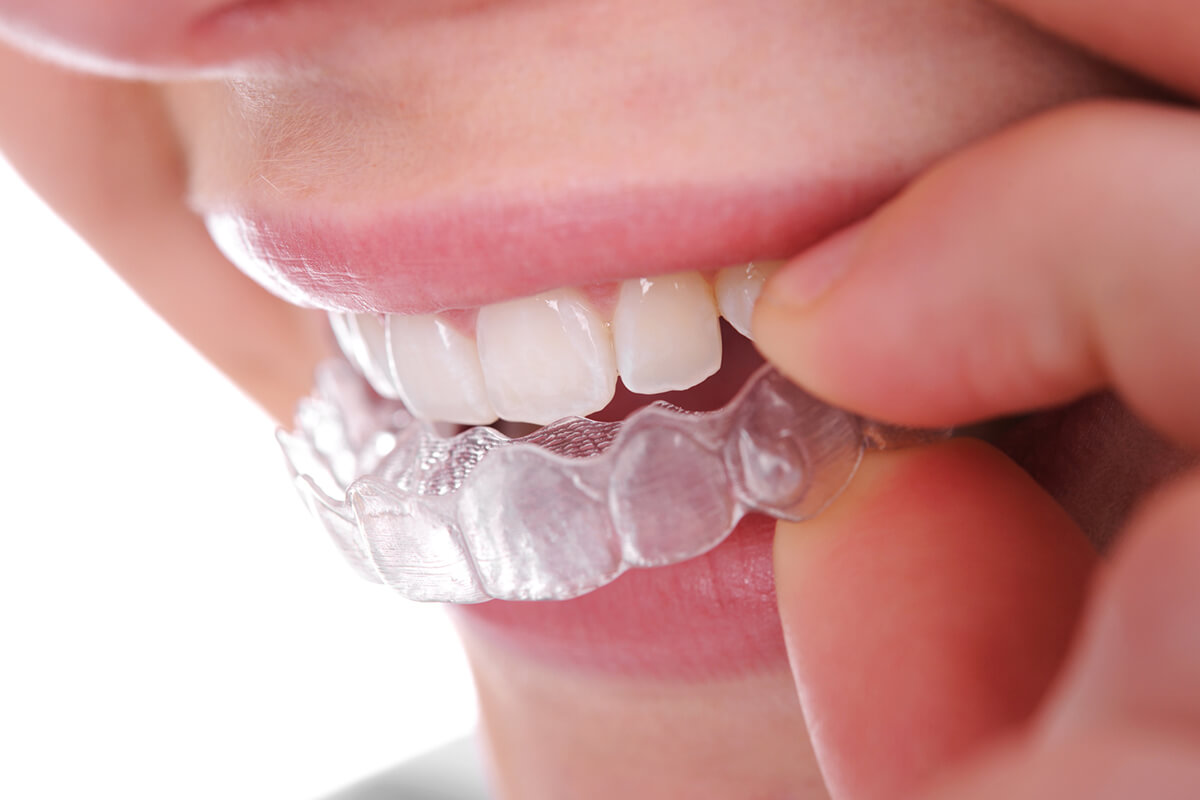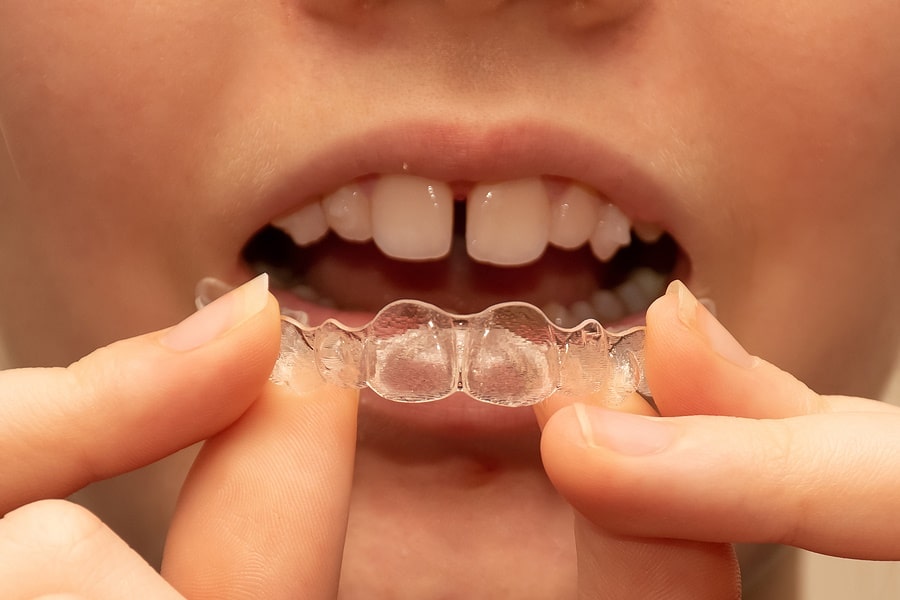The Ultimate Comparison: Invisalign vs. Traditional Dental braces for Grownups
The Ultimate Comparison: Invisalign vs. Traditional Dental braces for Grownups
Blog Article
Invisalign vs. Traditional Dental braces: Which Option Is Right for You?
When thinking about orthodontic therapy, the choice between Invisalign and conventional braces presents numerous important aspects that merit cautious evaluation. Invisalign uses a very discreet alternative with detachable aligners, while conventional dental braces provide a more visible yet efficient remedy for serious misalignment.
Introduction of Therapy Choices

In comparison, conventional dental braces contain steel brackets and cables that are adhered to the teeth. This method uses continual stress over time to accomplish placement. While efficient for intricate orthodontic issues, standard dental braces require regular gos to for changes and can position difficulties in keeping oral health as a result of the trouble of cleaning up about cords and brackets.
Both choices have their advantages, and the selection usually hinges on particular dental conditions, way of living choices, and individual compliance. Inevitably, consulting an orthodontic expert is essential for figuring out one of the most suitable therapy plan customized to private requirements. Recognizing the subtleties of each choice can substantially affect the total success of orthodontic therapy.
Visual Factors To Consider
A significant element influencing the option between Invisalign and conventional braces is the aesthetic appeal each therapy offers. Invisalign aligners are crafted from clear plastic, making them practically unnoticeable when worn. This very discreet look is especially attracting teens and grownups that may feel uncomfortable about their orthodontic treatment. The ability to maintain an all-natural smile throughout the placement process can considerably enhance the patient's self-confidence in professional and social setups.
In comparison, standard braces are composed of metal braces and cords, which can be much more visible. While developments in orthodontic technology have caused the advancement of smaller braces and colored elastics, typical braces still maintain an even more noticeable profile. For some individuals, the presence of braces might prevent them from seeking necessary treatment.
Inevitably, the option between Invisalign and standard braces might pivot on individual preferences concerning appearances. Individuals that prioritize discernment commonly lean towards Invisalign, while those who are much less concerned about exposure might choose for standard braces. Understanding the visual effects of each option is crucial for making a notified decision that lines up with one's way of living and choices.
Convenience and Convenience

In regards to ease, Invisalign aligners are detachable, allowing individuals to enjoy their favorite foods without restriction and keep ideal oral hygiene. Cleaning and flossing are streamlined, as the aligners can be secured throughout these regimens, whereas typical dental braces need careful steering around braces and wires.
In addition, Invisalign's modern system permits less orthodontic visits. Clients generally obtain numerous sets of aligners simultaneously, which can improve the treatment procedure and reduce time invested in the orthodontist's chair. On the other hand, traditional dental braces demand regular modifications, making them less hassle-free for those with hectic timetables. Invisalign. Overall, the comfort and ease of Invisalign make it an appealing option for numerous individuals looking for orthodontic treatment.
Treatment Period and Effectiveness
While both Invisalign and standard dental braces work in fixing oral misalignments, the period of treatment can differ significantly between the 2 alternatives. Typically, Invisalign therapy can take anywhere from 12 to 18 months, depending upon the intricacy of the instance. The try this out clear aligners function by progressively changing teeth into their preferred settings, and normal follow-ups with an orthodontist aid make certain progress remains on track.
On the other hand, traditional braces frequently need a longer commitment, normally varying from 18 months to 3 years. This results from their set nature and making use of cords and braces, which can be extra effective for intricate instances and extreme imbalances (Invisalign). The therapy performance of typical dental braces is well-documented, as they enable accurate modifications and higher control over tooth activity
Ultimately, the choice between Invisalign and standard dental braces might rest on both the awaited therapy period and the details oral issues handy. Consulting with an orthodontist is essential, as they can supply customized suggestions based upon individual needs, guaranteeing the chosen approach lines up with desired timeframes and outcomes.
Cost Contrast and Insurance Coverage Options
Price plays a substantial role in the decision-making procedure for individuals taking into consideration view it orthodontic treatment, whether choosing Invisalign or typical dental braces. Generally, the price of Invisalign ranges from $3,000 to $8,000, while typical dental braces generally set you back in between $2,000 and $6,000. Elements influencing these prices include the intricacy of the case, the period of treatment, and geographical area.
Insurance insurance coverage can dramatically impact out-of-pocket expenditures. Lots of dental insurance policy plans give partial protection for orthodontic treatments, yet the specifics can vary extensively. It is essential for people to evaluate their insurance policy policies to figure out the extent of protection for either option. Usually, traditional dental braces might be much more regularly covered by insurance strategies contrasted to Invisalign, which some insurance providers classify as an aesthetic procedure.
Furthermore, several orthodontic practices supply versatile layaway plan, making both therapy choices much more obtainable. Individuals ought to ask about prospective financing options and price cuts for ahead of time payments. Assessing the complete cost, including insurance benefits and repayment strategies, is necessary for making an informed decision that straightens with both aesthetic choices and budget considerations.

Final Thought
In summary, the choice between Invisalign and standard dental braces rests on multiple factors, including aesthetic preferences, convenience, therapy period, and cost. Invisalign uses a discreet, removable alternative that promotes dental health and nutritional adaptability, while conventional braces might be a lot more ideal for complicated oral problems and commonly come with a lower cost point. Inevitably, appointment with an orthodontist is necessary to analyze specific conditions and figure out one of the most appropriate treatment option for attaining optimal oral positioning.
When considering orthodontic treatment, the selection in between Invisalign and conventional braces offers a number of important factors that warrant cautious examination.Contrasting Invisalign and traditional braces exposes unique treatment options for orthodontic adjustment.While both Invisalign and conventional dental braces are efficient in dealing with oral misalignments, the duration of treatment can vary significantly in between the two alternatives.Cost plays a significant function in the decision-making procedure for people considering orthodontic therapy, whether opting for Invisalign or conventional dental braces.In recap, the selection in between Invisalign and conventional braces pivots on several variables, consisting of aesthetic choices, convenience, therapy duration, and expense.
Report this page